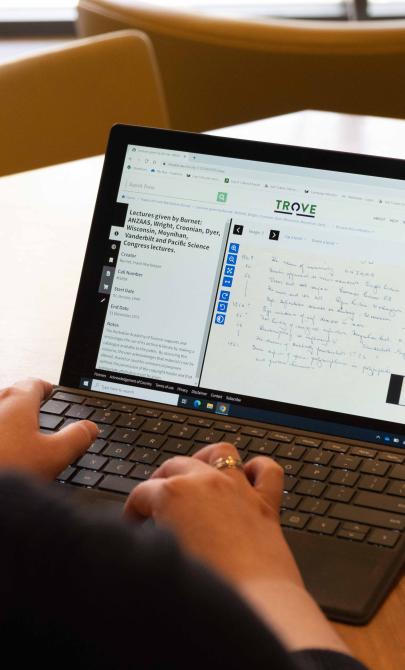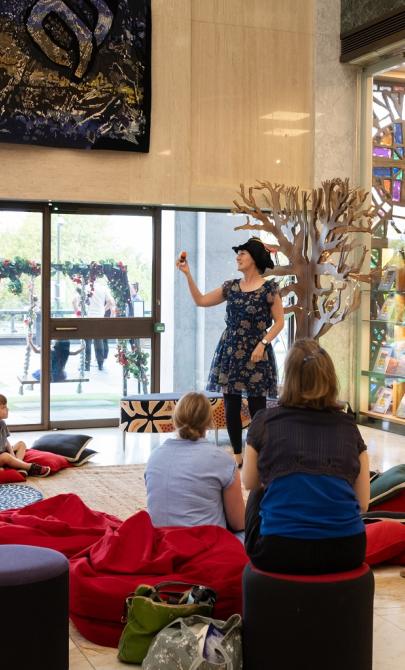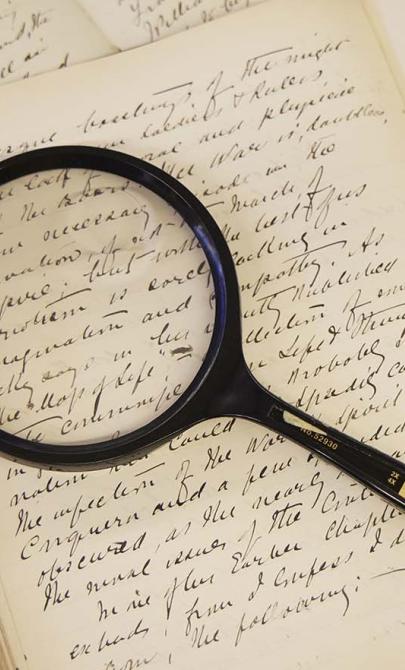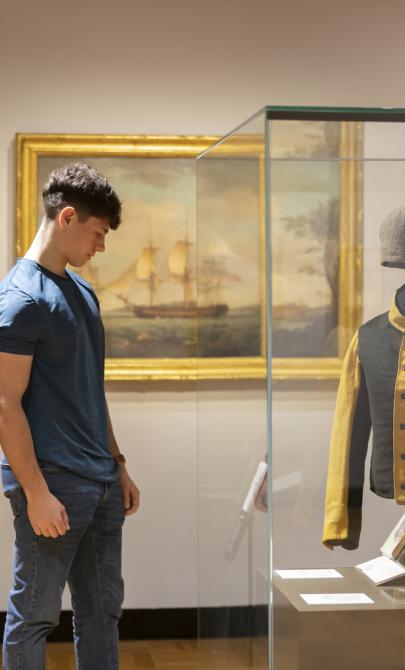Creative storytelling
About this module
This resource engages students by looking at a wide range of texts showing how to organise writing: the use of verbs, characters, settings and illustrations to create stories. Each theme looks at various types of text and encourages students to use their learned skills to understand and create stories of their own.
Copyright for teachers
You can download all collection materials in this resource for education purposes. For more information, go to copyright for teachers.
Topics in this module
This module covers 4 key topics.
Each topic includes an introduction to key concepts, links to key resources in our collection and a series of learning activities that cater for a variety of classroom contexts and learning styles.

May Gibbs, We are the Gumnut Corps, we're going to war, 1916, nla.gov.au/nla.obj-153093166
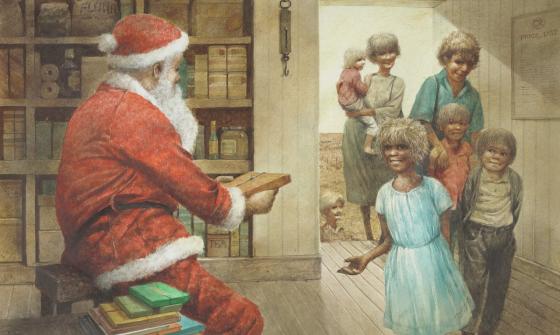
Jane Jolly and Robert Ingpen, Tea and Sugar Christmas, 2014, nla.gov.au/nla.cat-vn6420587
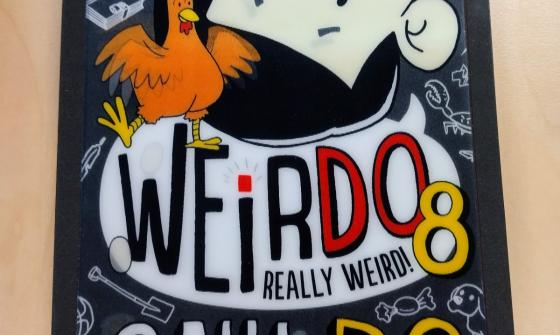
Anh Do and Jules Faber, WeirDo, 2017, nla.gov.au/nla.cat-vn7289358
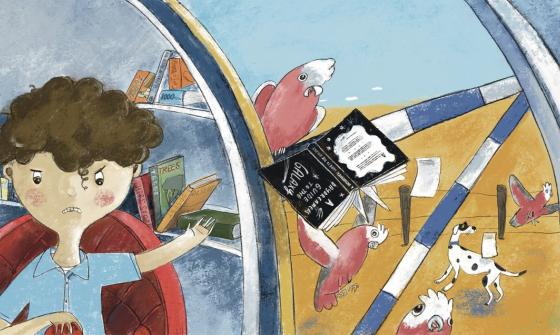
Emma Allen and Lisa Coutts, The Great Book-Swapping Machine, 2021, nla.gov.au/nla.cat-vn8630184
Introductory activities
Activity 1: Story structure
Choose a picture book that students know well. Read it aloud, drawing attention to both the text and the illustrations. Discuss the structure of the story and the five key elements that make up a narrative:
- Characters
- Setting
- Plot
- Conflict
- Resolution
Talk about how these elements work together to tell the story. Ask students to write down the five elements and identify them in relation to the book you’ve read.
Activity 2: Illustrations
Explore the illustrations in the book. Discuss whether the words and pictures have a symmetrical relationship (where the images and text tell the same story) or an enhancing relationship (where the images add meaning beyond the words).
Ask students to choose an illustration from the book and recreate it. Then, have them decide: does their picture tell the same story as the words, or does it add something more?
Activity 3: Narrative
Discuss narrative style with the class. Ask students to identify whether the story is written in:
- First person
- Second person
- Third person
- Alternating perspectives
You may wish to provide short examples of each style to help students understand the differences.
Activity 4: Book covers
We often hear the saying, 'Don’t judge a book by its cover', but covers still influence how we choose books. Ask students to think about why a book cover is important. Discuss how a cover:
- Suggests what the book is about
- Reflects the illustration style
- Sets the tone or mood of the story
Introduce the idea of a synopsis (a short summary of the story), and ask students to write a synopsis for the book you’ve read.
Concluding activities
Activity 5: Readathon scavenger hunt
Organise a readathon for your class or year level. Set it up like a scavenger hunt, where students are challenged to find and read a variety of books, both fiction and non-fiction, across a range of topics.
Encourage students to track what they read. At the end of the readathon, bring the class together to create a master list of all the books that were read.
Activity 6: Collaborative storytelling
Provide the class with a story framework that includes a:
- Location
- Challenge
- Resolution
As part of the story, the main characters must split up and work separately toward solving the challenge. Divide the class into groups and have each group write a chapter from the point of view of a different character, explaining how their character contributed to the resolution.
Each group can also be given a mystery prompt to include in their chapter. For example: A loud roar was heard in the distance. It was too far away to see clearly, but it sounded like a dragon. This prompt could guide one group to include a dragon in their part of the story.
When all groups are finished, read the story aloud as a class, with a representative from each group presenting their chapter.
Activity 7: Fairytales with a twist
Choose a well-known fairytale or nursery rhyme and read it together as a class. Then, ask students to rewrite the story in the first person, from the point of view of a main character.
Encourage them to modernise the story by setting it in the present day or imagining how the character would act in today’s world.
Activity 8: Collage and class story
Create a large, layered collage that represents your school or classroom. Use a picture frame to help create depth and perspective. Students can draw themselves doing different roles or activities around the classroom and add their drawings to the appropriate layer.
Once the collage is complete, work together as a class to write a short story that brings the scene to life. The story could describe a day in the life of your class or highlight a special event shown in the collage.
Curriculum links
This resource is aligned with the Australian Curriculum: English for Year 3 students.
Text structure and organisation
- Understand that paragraphs are a key organisational feature of the stages of written texts, grouping related information together (AC9E3LA04)
- Identify the purpose of layout features in print and digital texts and the words used for navigation (AC9E3LA05)
Language for expressing and developing ideas
Literature and contexts
- Discuss characters, events and settings in different contexts in literature by First Nations Australian, and wide-ranging Australian and world authors and illustrators (AC9E3LE01)
Examining literature
- Discuss how an author uses language and illustrations to portray characters and settings in texts, and explore how the settings and events influence the mood of the narrative (AC9E3LE03)
Analysing, interpreting and evaluating
- Identify the audience and purpose of imaginative, informative and persuasive texts through their use of language features and/or images (AC9E3LY03)
- Use comprehension strategies when listening and viewing to build literal and inferred meaning, and begin to evaluate texts by drawing on a growing knowledge of context, text structures and language features (AC9E3LY05)
